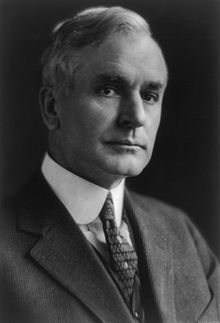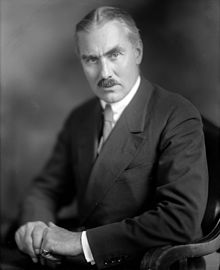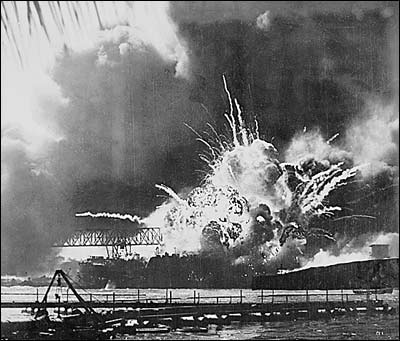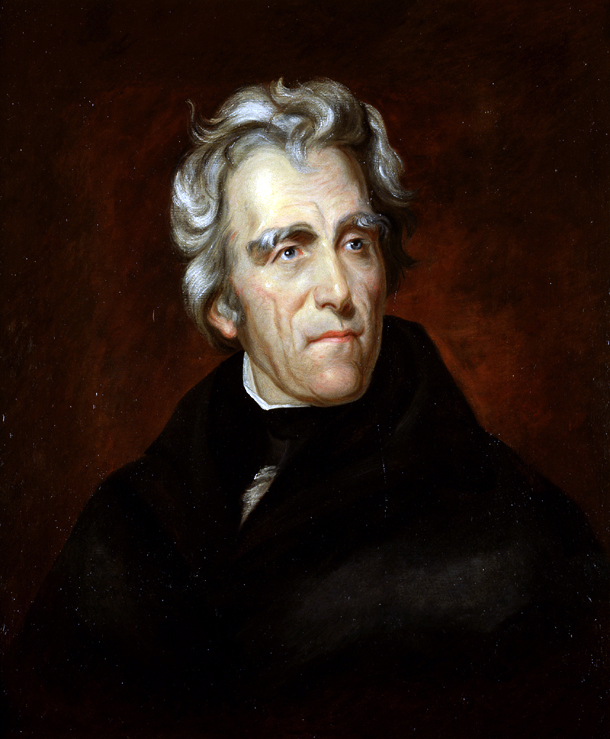In the
summer and fall of 1941, President Franklin D. Roosevelt confronted
wars in both Europe and
Asia. In Europe, a remilitarized Nazi Germany dominated most of the
continent and threatened to complete its domination with the capture
of Moscow and by bludgeoning England into submission. In Asia, Japan
was not only continuing its conquest of China, it had moved into
French Indo-China. There was little Roosevelt could do directly to
halt either war. The ability of a president to make policy decisions
is limited by the extent to which he can convince the American public
to support him. Since American public opinion at that time would not
support a declaration of war in either Europe or Asia, all Roosevelt
could do was support England with liberalized trade, and impose
economic sanctions on the Japanese. If those sanctions failed,
however, more direct military action might prove necessary. Roosevelt
hoped the sanctions would prove so burdensome to the Japanese that
they would lead to renewed talks about a peaceful solution, but at
the same time, he also understood America must be prepared to accept
war if Japan so chose.
In September of 1940, Roosevelt stated the American policy toward the
growing conflict in Europe and the Pacific, “I stand…as President
of all the people, on the platform… ‘We will not participate in
foreign wars, and we will not send our army, naval or air forces to
fight in foreign lands outside of the Americas, except in case of
attack’.” Sixteen days later, Germany, Italy, and Japan signed
the Tripartite Pact, creating an alliance and the birth of the Axis
Powers in the upcoming Second World War. There was now a dual threat
in both the European and Pacific Theaters which posed an even greater
threat to the United States. Roosevelt wrote to Ambassador to Japan
Joseph C. Grew, in response to the Tripartite Pact that the United
States is “engaged in the task of defending our way of life” and
“Our strategy of self-defense must be a global strategy which takes
account of every front.” In the aftermath of this alliance, it
became ever clear the policy of appeasement had failed in Europe and
was not working in Asia. Regarding the Pacific Theatre, the Empire of
Japan secured Manchuria in 1931, invaded further into China in 1937,
later becoming known as the Second Sino-Japanese War, and occupied
French Indo-China in 1940. From this point forward, tensions between
the United States and Imperial Japan became increasingly dire.
Correspondence between the two nations shows, on both sides, that an
understanding and agreement needed to be made in order to prevent an
open conflict. In response to the Tripartite Pact, Roosevelt ended
the exportation of all scrap iron and steel to Japan.
 |
| Pre WWII Japanese propaganda "Japan Has Woken Up" |
To
understand the policies of the Japanese Empire, one must understand
how their culture had a profound impact. Japan, at this time, was a
proud and traditional country, and when Japan transformed from a
feudal society believing in isolationism to an industrial war-machine
bound on expansion, there was much strife and disagreement among the
population. According to historian Stephen Pelz, “During the feudal
period, an inferior had been able to make a public protest only on
pain of death; therefore, when conditions became intolerable, the
loyal samurai would commit suicide, thereby hoping to induce his
master to self-reflection.” This perverse traditional style carried
over into the transformation of Japan and quickly became a method to
showcase the disapproval of their leaders. This “suicide for a
cause”, along with political assassinations, were the methods of
choice used to succeed in their ultimate goal of having the army and
the navy take control of the government and away from the
politicians. These demonstrations of disapproval were predominately
conducted by young members of the military to instill fear in the
Japanese high command. Fear of assassinations caused the “influential
group around the Emperor…to keep their lord safe by appeasing the
military.” This split the nation into two factions: the treaty
faction, who favored diplomacy, and the military faction which sought
confrontation.
The
military faction eventually accomplished its goal of controlling both
the army and the navy through intimidation, and as a result, began
Japanese expansion by invading Manchuria in the fall of 1931.
However, the treaty faction still controlled the Foreign Office which
determined diplomatic dealings with other countries such as the
United States. The Japanese Ambassador to the United States,
Kichisaburo Nomura, was a member of this treaty faction,
and as a
result, was never in the full loop of the decisions being made back
in Japan. Thus, while President Roosevelt and Secretary of State
Cordell Hull heard one thing from Nomura, they were seeing different
results from Japan. This military faction used this to their
advantage. While Nomura fed Roosevelt and Hull with promises of peace
and justified occupation, the army and navy continued their military
conquest of the South-Western Pacific.
 |
| Kichisaburo Nomura |
 |
| Cordell Hull |
On
July 24, 1941, the same day the Japanese invaded and occupied French
Indo-China, Acting United States Secretary of State Sumner Welles met
with Japanese Ambassador Nomura. Nomura told him that the military
occupation of French Indo-China was, “to assure to Japan an
uninterrupted source of supply of rice, and other food stuffs” and
“the need for military security.” On the very same day, at the
41st Liaison Conference, Minister Soemu Toyoda, who supported the
military faction, declared, “I would like to get the United States
to understand that the present occupation of French Indo-China is not
a military occupation, but something that is based on the Empire’s
need and was arranged after agreement with the French.” This
“agreement with the French” however, was with the French Vichy
Government which had just been installed as a puppet head of state
following the German occupation of France in the summer of 1940. The
Japanese presented similar justifications for the occupation of
Manchuria. Their real ambition was to acquire natural resources -
especially coal and iron ore.
In
defense of their occupation of French Indo-China, Ambassador Nomura
argued the Japanese could not withdraw without “losing face”. The
Japanese belief of “face” coincided with a person’s reputation
and honor, and how they were perceived by others. To leave French
Indo-China directly after occupying would bring shame and
embarrassment to the government. President Roosevelt questioned
Nomura asking if Japan occupied French Indo-China “due to German
pressure upon Japan?” This was a very formidable argument for
Roosevelt to present, for he believed Japan felt threatened by how
much progress Germany was making in Europe.
The
basis for Roosevelt’s idea dates back to when, in the early 1930’s,
Hitler began exercising German dominance in Europe and by 1941, had
already occupied the Rhineland, annexed Austria, taken
Czechoslovakia, conquered Poland and France, invaded Russia and was
knocking on Moscow’s door. Hitler had taken Germany from the depths
of depression and turned her into a world power in a fraction of the
time it took Japan since she emerged as a world power at the
conclusion of the Russo-Japanese war in 1905. Roosevelt thought
wrong. The military faction, who by this time was in control of the
government, actually admired how well Germany made progress in Europe
and sought to bring a parallel in the Pacific.
Due to European Colonialism, many of the countries in
Europe owned territory in the Pacific. As Germany steamrolled through
Europe, it left many targets available for the Japanese to move in
and conquer virtually unopposed, territories such as French
Indo-China, the Netherlands East Indies, and British Malaya.
President Roosevelt, however, did not understand why military force
needed to be used. This same military force was responsible for the
genocide in the Rape of Nanjing which became part of a campaign the
Japanese called the China Incident. The fact that the Japanese called
it the China Incident shows their intention to appear to the world as
a peace seeking nation, and not the imperialistic nation for which it
really was. The Japanese began to murder on a mass scale. In two
months during the Rape of Nanjing, “Japanese soldiers raped seven
thousand women, murdered hundreds of thousands of unarmed soldiers
and civilians, and burned one-third of the homes in Nanjing. Four
hundred thousand Chinese lost their lives as Japanese soldiers used
them for bayonet practice and machine-gunned them into open pits.”
 |
| Henry L. Stimson |
In
the very same month, the Japanese were also responsible for the
sinking of the U.S.S. Panay.
The Panay was an
American gunboat on a river near the town of Nanjing that was
attacked by Japanese bombers even though she was clearly marked with
three separate American flags. This incident was resolved by “the
acceptance of an indemnity of $2,214,007.36.” A critic of
Roosevelt’s policies toward Japan, historian Charles C. Tansill
claims, “The whole matter had been handled with admirable restraint
by the officials of both countries. It is greatly to be regretted
that this pacific spirit soon faded away.” Tansill believes
Roosevelt and his cabinet intentionally forced Japan into a situation
where they felt compelled to attack in order to bring about the
United States entry into World War II. Tansill quotes Secretary of
War Henry L. Stimson, who wrote in his Diary
on November 25, 1941, “The question is how we should maneuver them
into the position of firing the first shot without allowing too much
danger to ourselves.”
It
became clearer that Japanese intentions during the China Incident
were not just for resources, but there was little to nothing
Roosevelt could do to intervene. The United States, at that time, was
still in the midst of recovery from the Great Depression, and public
opinion, which desired to stay out of a foreign war, would not
tolerate any intervention.
The
day after the Japanese invaded French Indo-China, Roosevelt froze all
Japanese assets in the United States, essentially ending most trade
between the two nations. Since the United States supplied much of the
raw materials needed by the Japanese war-machine, Roosevelt severely
limited the Empire’s ability to expand. His hope was that Japan
would stop its expansionist program and resume a free and openly
based form of trade in the Pacific. In correspondence between the
American Ambassador to Japan, Joseph C. Grew, and the President, Grew
warned Roosevelt of the impact an oil embargo would have. It would
cause Japan to invade the Dutch East Indies to which the President
replied, “Then we could easily intercept her fleet.” This
response from Roosevelt makes historian Tansill believe, “he was
thinking in terms of war with Japan.” However, this conversation
between Roosevelt and Grew took place in September of 1939, long
before the Japanese invaded French Indo-China, economic sanctions
were used, and a diplomatic solution still seemed attainable.
Excluded
from these sanctions was the much needed resource of oil. Before the
Japanese invaded French Indo-China, Roosevelt was in a particular
bind. He did not want to stop the exportation of oil to Japan, and
even acknowledged that discontinuing the exportation of oil to the
Japanese would force them to move into the Netherlands East Indies to
fulfill their determination to become economically self-sufficient.
In a meeting with Nomura, President Roosevelt explained the reasons
for the exclusion of oil. It was because the United States
recognized, “that if these oil supplies had been shut off or
restricted the Japanese Government and people would have been
furnished with an incentive,” to invade the Netherlands East Indies
and, “assure themselves of a greater oil supply than that which,
under present conditions, they were able to obtain.” This exclusion
of oil was then an effort to continue diplomatic relations with the
Japanese in hopes of a peaceful solution.
The
later addition of oil to the sanctions came about because Assistant
Secretary of State Dean Acheson assumed that the decision to include
oil among the embargo items had already been made. He therefore
publicly announced the freezing of assets was an “embargo”
against the Japanese Empire. But, according to historian Herbert
Feis, “he did not explain how far short of one it would be.” The
public greeted this statement with approval thinking Roosevelt had
cut all ties of trade with the Japanese. The British and the Dutch
followed shortly after with their own embargoes on Japan and, within
a matter of days, Japan lost 90 percent of its oil imports. Though
Roosevelt did not want this policy carried forward, he did not speak
out and bring clarity to Acheson’s assumptions. There are two
primary reasons for this. The first was that the overall reaction
from the general public to this announcement was positive. Moreover,
if he reversed what had been done, Roosevelt and his cabinet would
appear as if they had surrendered to Japanese aggression. He now had
public approval to go forward with a policy that was more vocal
because it was backed by the people of the United States. By this
point, Roosevelt knew the Japanese war-machine’s true intentions.
Careful reading of the multiple proposals for peace by the United
States after the Japanese invaded French Indo-China, suggested an
ultimatum was set in which the Japanese must stop their expansionism
or the United States would intervene to protect American interests in
the Pacific. Such a policy as this was one the Japanese would not
accept. Historian Jonathan Utley claims this embargo, “placed a
time limit on peace in the Pacific.”
Both
Roosevelt and Welles acknowledged and sympathized with Japan’s
quest for natural resources, but resented the manner in which they
did it by military force. In explaining the American policy to
Japanese Minister, Mr. Kaname Wakasugi, in a meeting August 4, 1941,
Welles told Wakasugi that the policy of the United States had been
made perfectly clear in letters “exchanged between the Secretary of
State and the Prime Minister, to public statements made by the
Secretary of State and by the President and other officials.” He
declared that Japan’s policy was deemed, “intolerable by the
United States,” and if Japan’s military conquest continued it
would, “inevitably result in armed hostilities in the Pacific.”
Less than two weeks later, Roosevelt explained to Ambassador Nomura
that if Japan expanded any further into the Pacific “by force or
threat of force,” the government of the United States would, “take
immediately any and all steps which it may deem necessary toward
safeguarding the legitimate rights and interests of the United States
and American nationals and toward insuring the safety and security of
the United States.”
 |
| Joseph C. Grew |
Joseph
C. Grew, was the best kept secret of American policy in dealing with
Japan prior to the outbreak of war. Assuming his ambassadorial duties
to Japan in 1932, Grew saw first-hand the actions, policies, and
intentions of the Japanese Empire. He foresaw the growing threat of
the Japanese and warned Roosevelt and his staff of the impending
conflict that would stem as a result thereof. He wrote Roosevelt a
year in advance of the attack at Pearl Harbor that, “we are bound
to have a showdown someday” with Japan and he questioned whether or
not it was in America’s best interest to have this showdown,
“sooner or to have it later,” Grew claimed Japan had become one
of the “predatory nations…which aims to wreck about everything
that the United States stands for.” He also believed the economic
sanctions on Japan would, “seriously handicap Japan in the long
run,” but that these sanctions only reinforced Japan’s idea of
making herself economically self-sufficient. Taking all these factors
into consideration, Grew believed the problem with Japan should be
dealt with immediately because, “the principal point at issue…is
not whether we must call a halt to the Japanese program, but when.”
Grew’s
insight was extremely valuable to President Roosevelt and Secretary
of State Cordell Hull, for Grew was the eyes and ears of the United
States. In a telegram to Hull, dated January 27, 1941, Grew wrote,
“the Japanese military forces planned, in the event of trouble with
the United States, to attempt a surprise mass attack on Pearl Harbor
using all of their military facilities.” Grew learned of this from
a colleague, who deemed it was important enough to tell him after
hearing it from multiple sources of information. Only two months
later he wrote to Hull that over the weekend in the main streets of
Osaka, “anti-American, British, and Chinese posters have been
observed,” and they contained “crude caricatures of Churchill,
Roosevelt, and Chiang Kai-Shek being struck by a hammer and the
caption in translation, ‘Strike the enemies of the Imperial
nation’.” Grew’s point to Roosevelt and Hull was that if either
the United States or the Empire of Japan continued their course of
action, it will become inevitable in some point of time that a
military conflict will arise. Grew then revealed the propaganda being
used by the military faction in a telegram to the Secretary of State.
“Japanese press continues to emphasize economic encirclement by
American and British in form of freezing orders and export bans and
Japan’s preparedness against all eventualities.” The Japanese
Empire believed the American policy in regards to their expansion was
to contain, and control their empire, through coercion, by the use of
sanctions - which was not entirely false. By this point, Roosevelt
was using these sanctions to put pressure on the Japanese Empire in
hopes of a peaceful settlement.
Correspondence
from Grew to Hull in the latter months of 1941 described how the
embargo on Japan and the freezing of assets have taken its toll on
the Japanese economy. Grew reported an “increasing seriousness”
in the economic situation, and that multiple reports pointed towards
a “progressive decline” in the industrial production on goods due
to the “scarcity” of supplies and a skilled labor force. Grew
then labeled the international financial position as, “embarrassing.”
 |
| Operation MAGIC |
As
November drew to a close, tensions between the two nations grew.
Conspiracy theorists argue that, by this time, the United States had
cracked the Japanese diplomatic code through
a program called MAGIC; an allied cryptanalysis program used to
decipher Japanese code, and had known of the impending Japanese
attack at Pearl Harbor. This is the backbone of the “Back Door”
argument on how Roosevelt let the Japanese attack the United States
at Pearl Harbor. Historian Mark A. Stoler argues, “American
cryptographers had indeed broken the Japanese code, but it was their
diplomatic code, not
any army or navy code. Consequently, Roosevelt and his advisors knew
from MAGIC that a Japanese attack was imminent if agreement was not
reached by November 29.” This agreement was of a diplomatic nature
and therefore, alerted the United States of an attack, but, “they
did not know where that attack would take place or what the overall
Japanese war plan was... and Japanese troop ships had been spotted
heading south.” This led Roosevelt to believe the Japanese planned
to attack either the Dutch East Indies or the Philippines, well away
from Pearl Harbor.
One viable option for Roosevelt in response to these
rapid troop movements, was to challenge the Japanese command and call
for an immediate stop to it, but instead, on November 27, he issued a
“war warning” to the American commanders in the Pacific. If
Roosevelt had contacted the Japanese command and demanded them to
cease all troop movements, it would have alerted the Japanese to the
American penetration of their diplomatic code. Grew issued Hull
another warning in mid-November, emphasizing a “need for guarding
against sudden military or naval actions by Japan,” and that the
Japanese would, “exploit all available tactical advantages,
including those of initiative and surprise.” However, Grew made
clear that the United States should not
give prior warning because the “control in Japan over military
information” is “extremely effective.” This suggests that Grew
may have believed that lives lost in a surprise Japanese attack would
be outweighed by the overall benefits of knowing the Japanese
diplomatic code.
The
letters and correspondence from Roosevelt, Welles, and Hull all
suggest that when in communication with the Japanese heads of state,
the intention was to find a peaceful diplomatic solution. It was the
Japanese policy of ‘Expansion by Force’ that brought about the
attack at Pearl Harbor, Hawaii, December 7, 1941. There is no
evidence to support the claim that Roosevelt purposely tightened the
screws so hard on Japan economically, that it forced them to attack.
All of Roosevelt’s policies were conducted in response to Japanese
aggression in the Pacific. Yes, Roosevelt could have publicly
announced that oil would not be a part of the sanctions against
Japan, reversing Acheson’s announcement, but with public opinion
turning to an anti-Japanese mood after the invasion of French
Indo-China, Roosevelt used this to his advantage. It was clear to
him, by that point, the intentions of the Japanese and their need to
expand.
With
the military actions of the Japanese, the failure of diplomatic
negotiations, and the oft-repeated warnings from Grew, it was only a
matter of time before the Japanese attacked, and forced the United
States into the bloody conflict of World War II. Roosevelt and his
cabinet presented a very clear stance in their disdain for Japanese
aggression and pursuance of peaceful negotiations. The sanctions
Roosevelt employed had a drastic effect on the Japanese economy, but
the Japanese did not respond in the way Roosevelt would have hoped.
Instead, the Japanese invariably continued their expansion into the
South-Western Pacific. They showed a total disregard to the peoples
of that region, and eventually attacked the United States at Pearl
Harbor, Hawaii, bringing about the American entry into World War II.
















